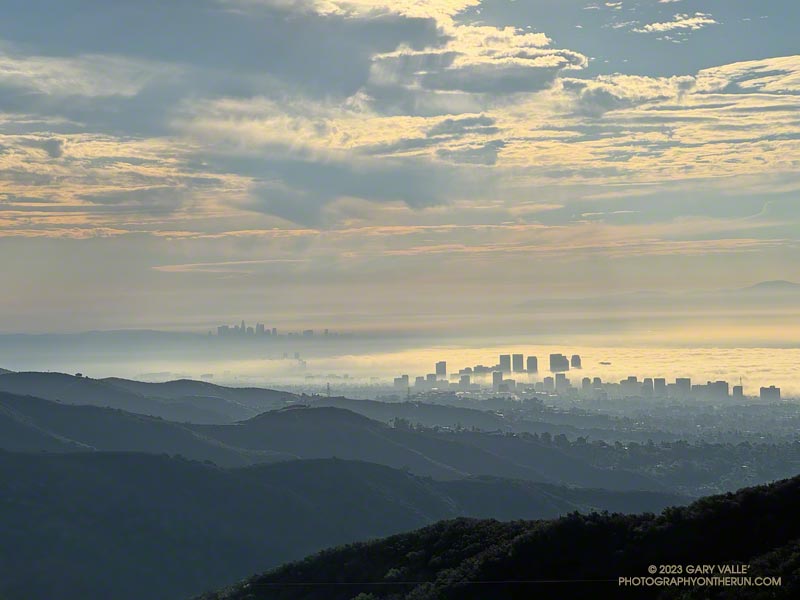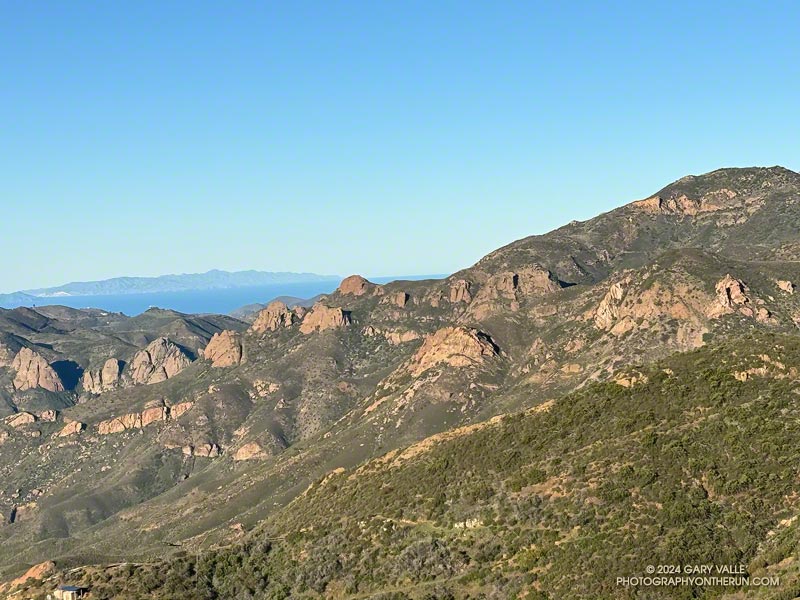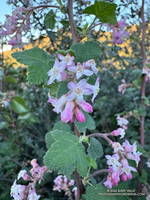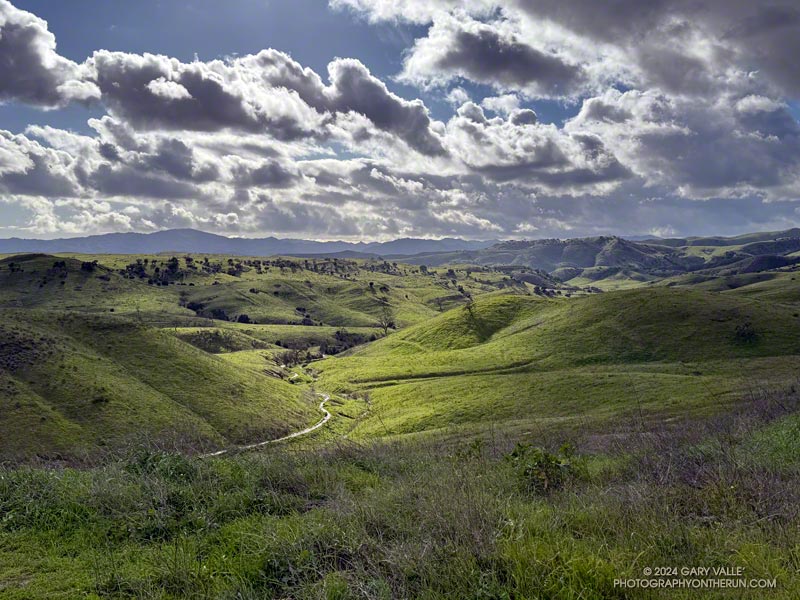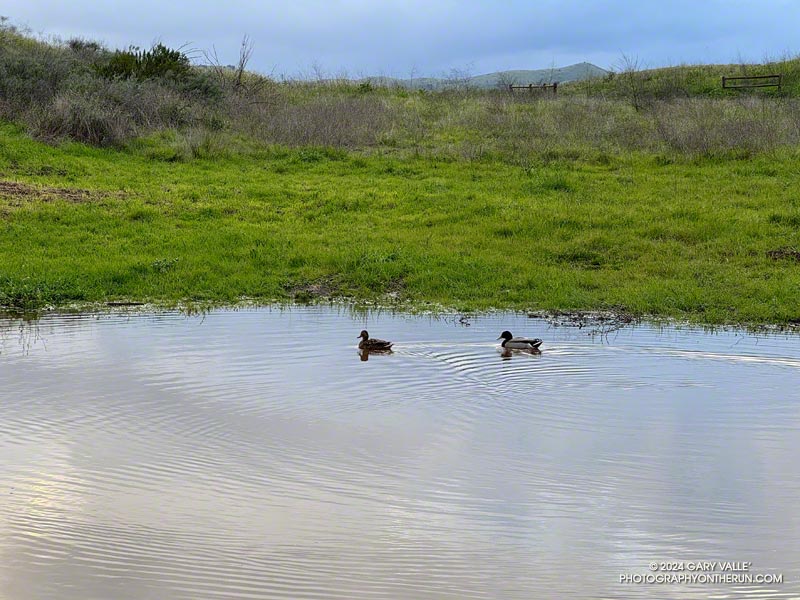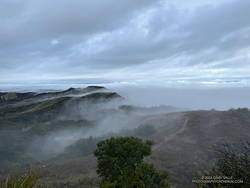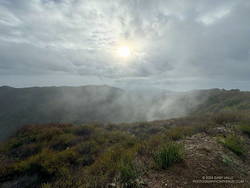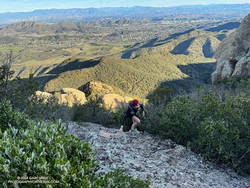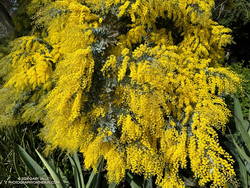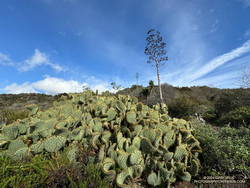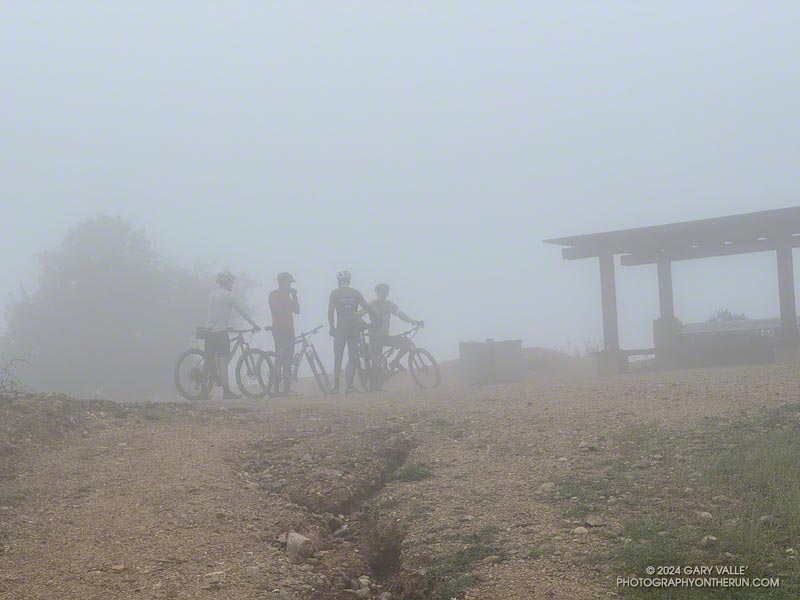
It’s uncommon to have back-to-back Rain Years with 20+ inches of rain in Los Angeles. During Rain Year 2022-2023, Downtown Los Angeles (USC) recorded 28.4 inches of rain — about two times normal. This rain year Los Angeles has already had about 21 inches of rain, so another big year is in progress.
Curious to see how the trail conditions compare to last year, on February 17th and 25th I ran the Trippet Ranch Loop in Topanga State Park.
The big surprise was that the fire roads on the loop — Fire Road #30, Eagle Springs Fire Road, and a short section of Eagle Rock Fire Road — generally fared better than last year. Fire Road #30 had some damage along it’s shoulder, but I did not see the numerous mudslides along these roads like last year.

The news on the trails was divided. One of the more unusual events occurred where the Garapito Trail crosses the east fork of Garapito Creek. A mudslide from a gully on the northwest side of the creek crossed the creek, and left a pile of debris on the trail. The stream may have been dammed by mud and debris for a short time. Farther up the trail, about a half-mile from Eagle Rock Fire Road, a section of the trail collapsed in a slide.
The Musch Trail was very muddy and wet in the usual places. There were a couple of slides along the trail, but all things considered, the trail was in OK shape. The Bent Arrow Trail remains closed as a result of previous storm damage.
Last year, the bloom of bigpod Ceanothus was well underway in early January. This year the bloom began about a month later but is now happening in a big way. Greenbark Ceanothus is also starting to bloom. Some peonies were blooming on an east-facing slope of the Garapito Trail, and a Fuchsia-flowered gooseberry was in bloom near Fire Road #30.
Here are some photos taken on these two runs.
Some related posts:
– Popular Trails in Topanga State Park Damaged by Winter Storms
– Wettest 14 Months in Los Angeles in 134 Years
– Rainy Season Trail Running on the Backbone Trail

